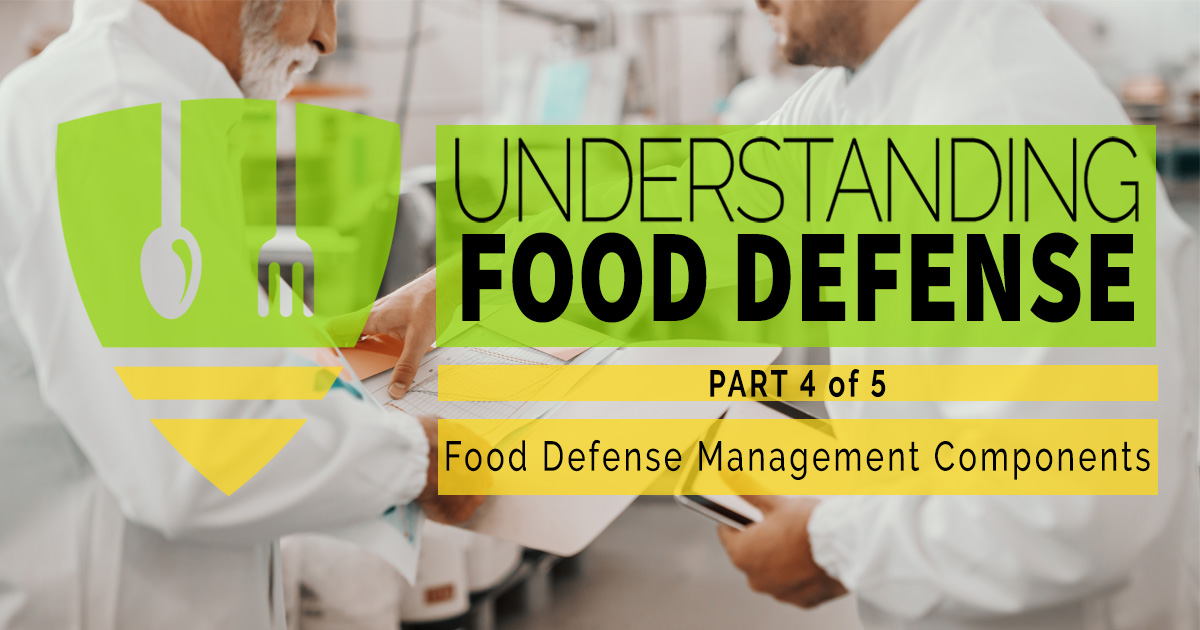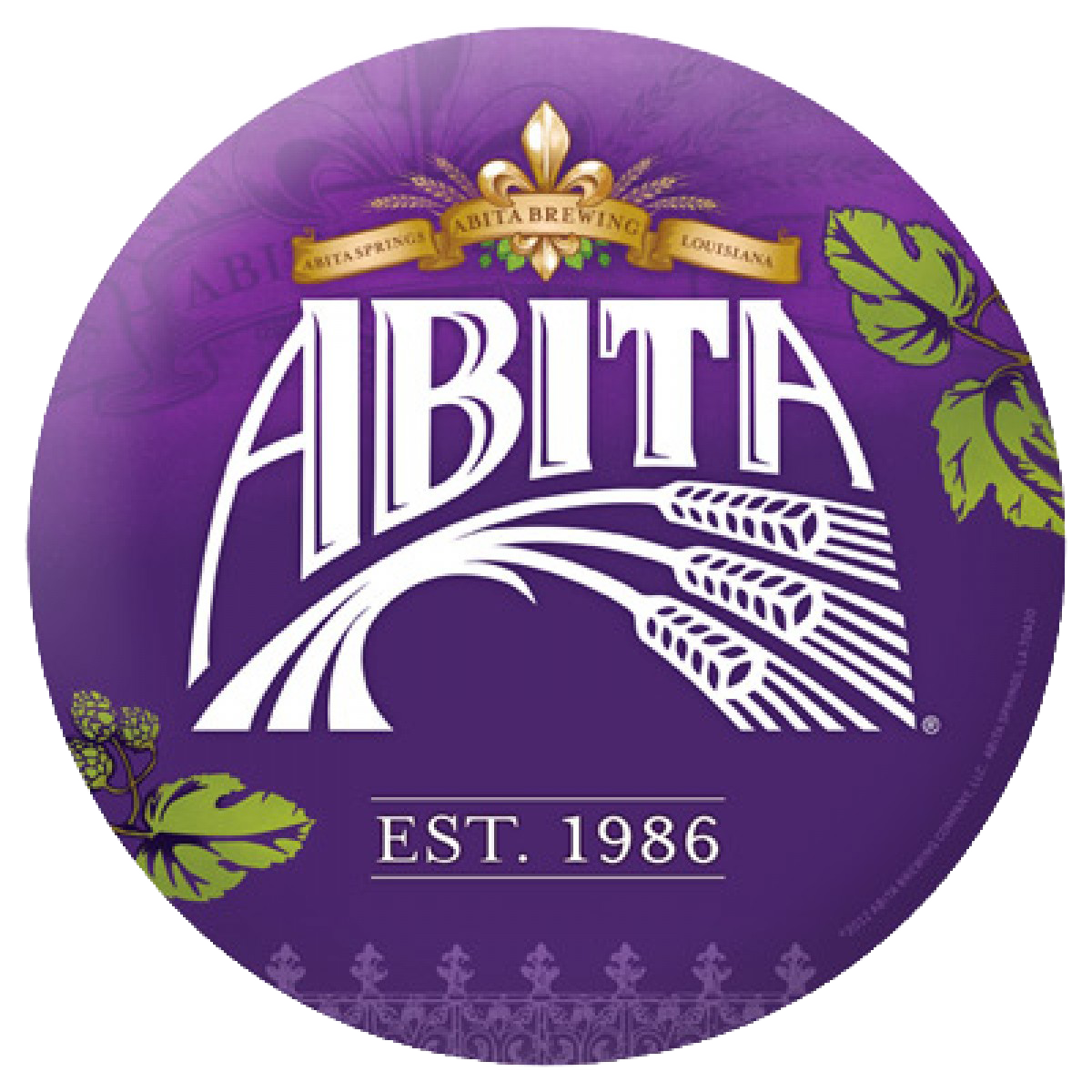Food Defense Management Components
Food Defense Management Components
The next steps in the food defense plan process
What are Food Defense Management Components?
Section 121.138 of the food defense rule requires that all identified mitigation strategies have certain management components in place in order to ensure that those mitigation strategies are properly implemented. Food defense management components are broken into three categories:
- Monitoring
- Corrective Actions
- Verification
Below we will discuss in further detail how management components play an important factor with proper implementation of your food defense plan.
Monitoring
Once mitigation strategies are finalized in your food defense program, you must develop a written monitoring plan to assure that these strategies are effectively performed. This monitoring plan must also state the frequencies at which each of your mitigation strategies are to be monitored. There is no set frequency to monitor. Frequencies can be determined based on risk, resources, product type, and/or other factors specific to your facility.
In part three of our series, we used the following mitigation strategy example:
Mitigation Strategy: Access to the mixer will be controlled by closing and securing the lid with a combination padlock where only approved personnel have the code to open the lock. This will prevent unauthorized personnel from accessing the mixer and potentially adding a contaminant to the mixer while it is left unattended.
If we use this same example to discuss food defense management components, a written monitoring procedure example could be:
Monitoring Procedure: The area supervisor will verify once per week that the mixer lid is secured with a company issued combination padlock when not in use.
Whenever you develop your monitoring plan, just be certain it has a direct relationship to the mitigation strategy and the significant vulnerability that was identified in your initial vulnerability assessment.
Corrective Actions
When monitoring reveals that mitigation strategies have failed or were not properly implemented, corrective actions must be taken. These corrective actions must be appropriate to the vulnerability that is being monitored. Preplanned corrective actions must be a written part of your food defense plan. Using the example above, a corrective action could be:
Corrective Action: If the mixer is unsecured, inspect the contents in the mixer. Interview employee(s) in charge of securing the mixer to understand why it was not secured. If any tampering is suspected, stop production, evaluate product and determine root cause and corrective action. Follow crisis management procedures if necessary.
Verification
The last of the food defense management components is verification. Verification is an activity, other than monitoring, that can help determine if the program is operating the way it is intended to operate. Are you doing what you say you are doing?
As part of your food defense program, a qualified individual must verify:
- that appropriate food defense monitoring is being conducted at the proper defined frequencies stated in your food defense plan.
- proper corrective actions are taken when mitigation strategies have failed.
- monitoring and corrective action records are reviewed within appropriate timeframes and are complete.
- The program is reanalyzed at appropriate intervals (further discussed in part 5 of our series).
-
Similar to the other management components, verification procedures must also be written and state the frequency of when verification will occur.
Summary
Food defense management components are the driving force for your food defense plan. Records of monitoring, corrective actions and verification activities are proof that your plan is being fully implemented and continuously improving. Regulators, such as FDA, will use these records to do their own verification that your facility is in compliance with the new rule.
In our Intentional Adulteration - Conducting Vulnerability Assessments course, we provide attendees with guidance on developing appropriate management components to ensure mitigation strategies are being implemented as written in your food defense plan. Register for one of our upcoming classes or contact us today to schedule your in-house training. We are approved for both virtual and in-person training!
About the author

Lance Roberie
Food Safety Consultant and TrainerLance Roberie has over 20 years of quality assurance and food safety experience within the food industry. Mr. Roberie holds the following certifications:
- Certified Food Safety HACCP Manager
- Preventative Controls for Human Foods (PCQI) Lead Instructor
- Meat & Poultry and Seafood HACCP Lead Instructor
- FSPCA Food Defense (IAVA) Lead Instructor
- ASQ Certified Manager of Quality & Organizational Excellence
- ServSafe Instructor and Exam Proctor
- Internal Auditor and GFSI Specialist
Lance and the Food Safety & Quality Services’ training curriculum will advance your team's food safety knowledge through certified training, consulting, and “real life” industry scenarios.
upcoming Classes
September 17, 2025 09:00 AM - 03:00 PM
October 14, 2025 08:00 AM - October 16, 2025 05:00 PM
August 26, 2025 08:00 AM - August 28, 2025 05:00 PM
Need a Food Safety Specialist?
Free 15 Minute Consultation.Learn how we helped Abita Brewing Company pass their first food safety audit with an A grade.

